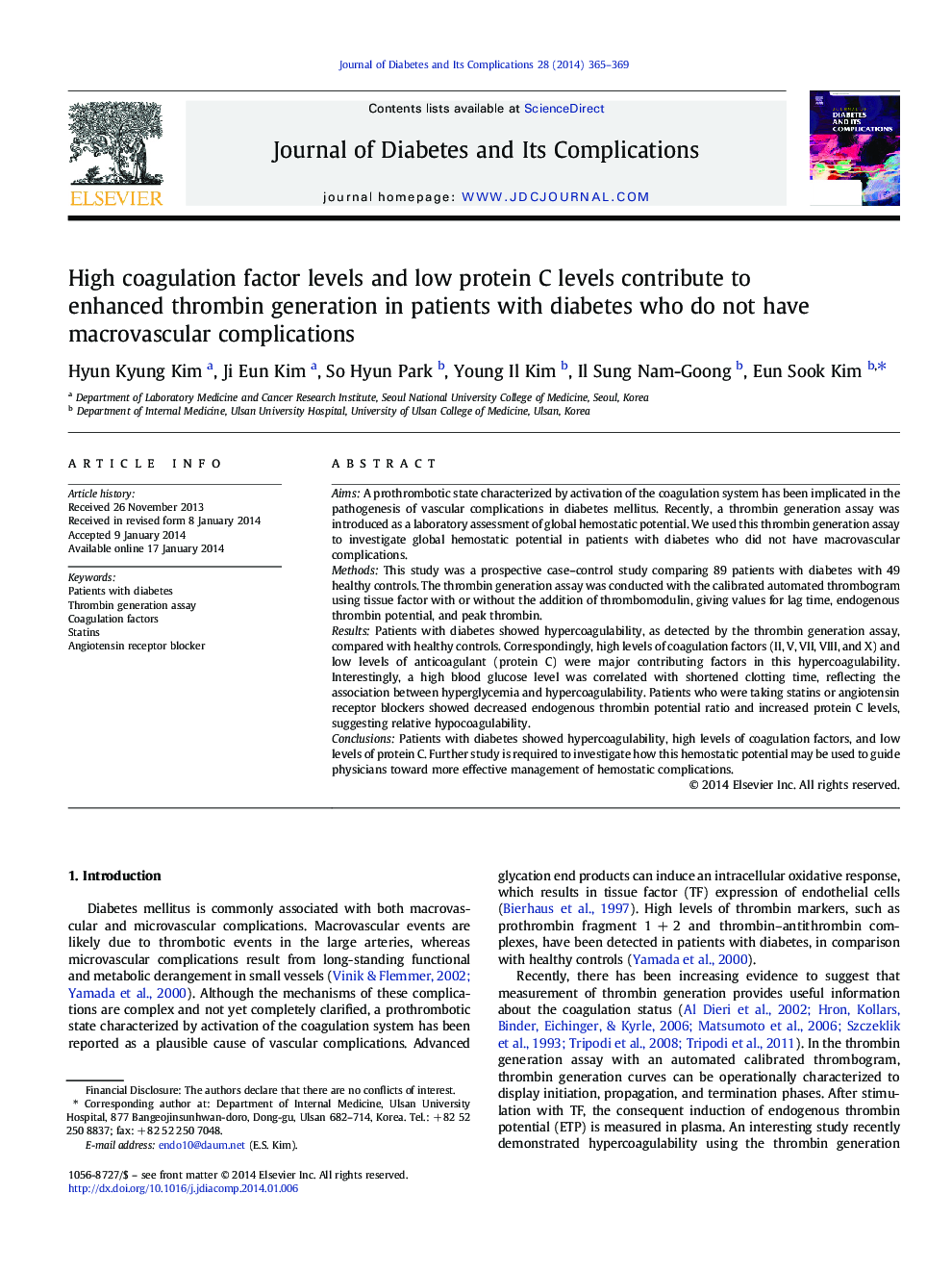| Article ID | Journal | Published Year | Pages | File Type |
|---|---|---|---|---|
| 5902608 | Journal of Diabetes and its Complications | 2014 | 5 Pages |
AimsA prothrombotic state characterized by activation of the coagulation system has been implicated in the pathogenesis of vascular complications in diabetes mellitus. Recently, a thrombin generation assay was introduced as a laboratory assessment of global hemostatic potential. We used this thrombin generation assay to investigate global hemostatic potential in patients with diabetes who did not have macrovascular complications.MethodsThis study was a prospective case-control study comparing 89 patients with diabetes with 49 healthy controls. The thrombin generation assay was conducted with the calibrated automated thrombogram using tissue factor with or without the addition of thrombomodulin, giving values for lag time, endogenous thrombin potential, and peak thrombin.ResultsPatients with diabetes showed hypercoagulability, as detected by the thrombin generation assay, compared with healthy controls. Correspondingly, high levels of coagulation factors (II, V, VII, VIII, and X) and low levels of anticoagulant (protein C) were major contributing factors in this hypercoagulability. Interestingly, a high blood glucose level was correlated with shortened clotting time, reflecting the association between hyperglycemia and hypercoagulability. Patients who were taking statins or angiotensin receptor blockers showed decreased endogenous thrombin potential ratio and increased protein C levels, suggesting relative hypocoagulability.ConclusionsPatients with diabetes showed hypercoagulability, high levels of coagulation factors, and low levels of protein C. Further study is required to investigate how this hemostatic potential may be used to guide physicians toward more effective management of hemostatic complications.
